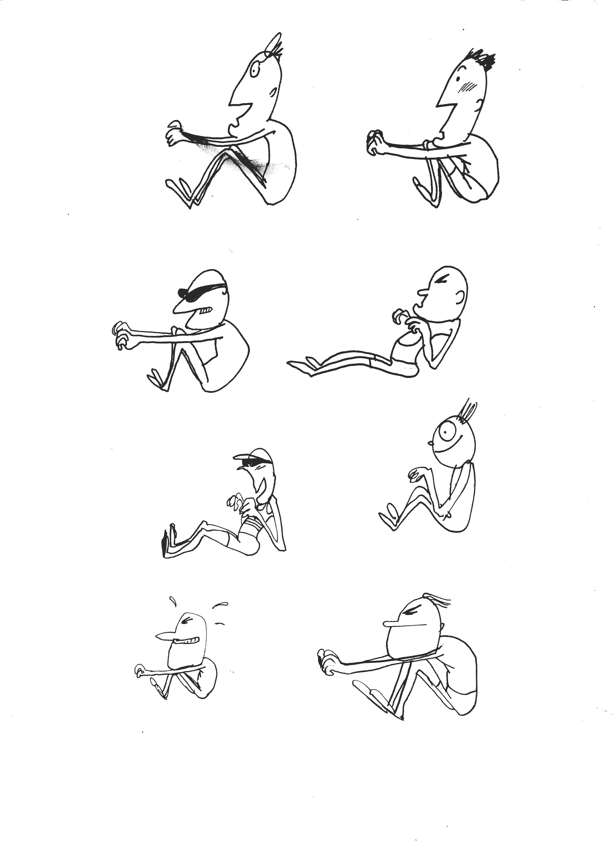Want to animate your illustrations? Follow Simon Spilsbury's advice
Simon Spilsbury'S clients include Nike, the Guardian and Paramount Comedy Channel, to name just a few. In the this interview, the Bath-based creative tells you how to animate your illustrations
Computer Arts: How illustrators can turn their work into believable animations?
Simon Spilsbury: The transition from my work to animation, or my work moving, is a very tangible one. I don't really start trying to make individual stills look good; because my line is very fluid, it's naturally expected to move anyway.
The credibility comes from the way it moves. With regard to keeping the viewer interested, the art of that is to use an animator who knows your work intimately and is on a similar wavelength. Then, the movement won't appear as an add-on but will seamlessly add to the character of your line.

CA: Tell me about the projects you have animated, how they came about and any difficulties you encountered?
SS: I've animated many projects that have come about mostly in the right way: by producers knowing my work. There's a lot of stuff out there where the wrong artists are put together with the wrong animators. I haven't really encountered many difficulties, quite the opposite. As technology becomes more advanced the whole process becomes more doable.
Rarely are the budgets big enough to enable you to become indulgent – which suits as my line is quite low-fi – so the turnaround times these days are very quick. Stop-frame and rostrum are easily replaced by the puppet tool in After Effects and any difficulties that arise are generally me being fussy as to whether that genuinely replicates 25fps.

CA: What moved you to create your own animations?
SS: I always thought my work should move. I draw very spontaneously and very fast and when you film that process it virtually moves anyway. Having the animator Simon Deshon in the studio full-time has definitely moved me. My drawings lend themselves to his movement and vice-versa.
CA: Which skills do you see as crucial to successful animation – storytelling, scriptwriting, timing etc. – and how have you developed them?
SS: I haven't specifically developed them. My sketchbooks have always had a narrative feel and although I definitely wouldn't consider myself a great storyteller you do have to understand a bit to turn dry matter into a narrative. Especially for commercial stuff, ads and so on, where you have to be very concise. Timing is crucial: that's where the animator comes into his own.
CA: Can you explain the logistics of how you go about creating an illustration, your typical workflow, and how you then develop it into an animation?
SS: I don't really develop an illustration into an animation; it's one and the same thing. Workflow of the process would be character development or scouring old sketchbooks for existing characters then creating all the separate assets needed for the job in hand. A bit different than sitting at a light table doing frame by frame.
Get the Creative Bloq Newsletter
Daily design news, reviews, how-tos and more, as picked by the editors.

Thank you for reading 5 articles this month* Join now for unlimited access
Enjoy your first month for just £1 / $1 / €1
*Read 5 free articles per month without a subscription

Join now for unlimited access
Try first month for just £1 / $1 / €1

The Creative Bloq team is made up of a group of art and design enthusiasts, and has changed and evolved since Creative Bloq began back in 2012. The current website team consists of eight full-time members of staff: Editor Georgia Coggan, Deputy Editor Rosie Hilder, Ecommerce Editor Beren Neale, Senior News Editor Daniel Piper, Editor, Digital Art and 3D Ian Dean, Tech Reviews Editor Erlingur Einarsson, Ecommerce Writer Beth Nicholls and Staff Writer Natalie Fear, as well as a roster of freelancers from around the world. The ImagineFX magazine team also pitch in, ensuring that content from leading digital art publication ImagineFX is represented on Creative Bloq.
